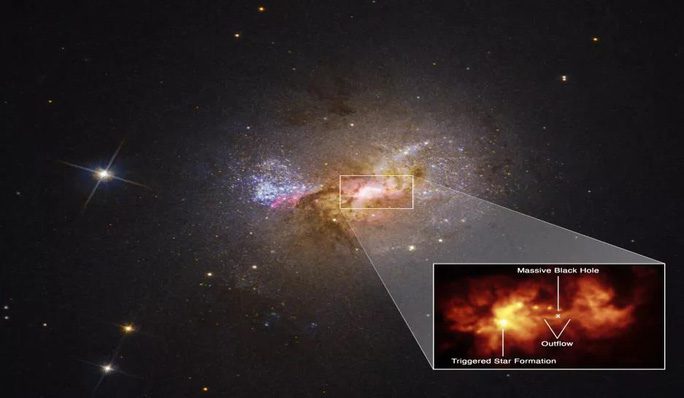A stunning view of a monstrous black hole has just been captured by the Hubble Space Telescope in a dwarf galaxy located 34 million light-years away from us.
According to a publication recently released in Nature, the monstrous black hole has expelled a massive stream of ionized gas, stretching 500 light-years from its center at a speed of approximately 1.6 million kilometers per hour. This fiery storm is directed straight into a nearby star nursery, triggering a rapid birth of numerous stars.

The monstrous black hole contributing to star formation – (Photo: NASA, ESA, Zachary Schutte, Amy Reines, Alyssa Pagan).
This monstrous black hole is at the center of Henize 2-10 galaxy. This is the first time astronomers have recorded a black hole in a dwarf galaxy actively producing stars.
“Hubble has provided a clear picture of the relationship between the black hole and the surrounding star formation region, located 230 light-years away” – said astrophysicist Amy Reines from Montana State University, a member of the research team.
According to Live Science, supermassive black holes typically generate such scorching gas streams by sucking material from nearby gas clouds or stars, then ejecting it back into space as brilliant plasma moving at light speed. This gas stream interacts with gas clouds in the star formation region, creating an ideal nursery for new stars.
This surprising discovery reveals that what seems to be the deadly monster of the universe plays a crucial role in generating elements of life: new stars, which may eventually become the parents of planets.
According to NASA, for a black hole to contribute to star formation, a bit of luck is required: the gas stream it expels needs to be just right, because if it is too hot, it will prevent the gas clouds from cooling down, thus hindering star formation.





















































